Most Haunted Places In The World !
I have always been interested in the Paranormal. I wanted to make a post about the Most Haunted Places In The World, and I also want YOU to post in the comments about haunted places you have been, and your Paranormal Experiences.
MOST HAUNTED PLACES IN THE WORLD
#1 - THE RMS QUEEN MARY http://www.queenmary.com

The RMS Queen Mary is now permanently anchored in Long Beach,
California. The ship offers overnight accommodations in its cabins
and suites, dining and banquet facilities, and daily historical and
ghost tours.
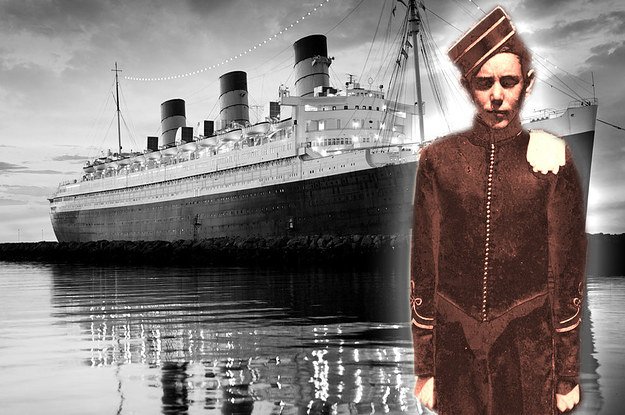
The RMS Queen Mary is 1,019.5 feet long, weighs 81,237 gross
tons, is 181 feet tall from its keel to the top of its smokestack, has a
160,000 horsepower engine capacity, and was built to accommodate
approximately 3,000 passengers and crew comfortably. In all aspects,
the Queen Mary is significantly bigger than the Titanic was, built 20
years earlier. The ship made her maiden voyage on May 27, 1936.
The Queen Mary was one of the last of the great transatlantic ocean
liners, and her civilian service would be short-lived. In March 1940,
she was painted grey and given the ominous name of the “Gray Ghost.”
The Queen Mary was pressed into service for World War II and was
transporting around 15,000 troops at a time, mainly for the United
States.
Psychic medium Peter James may be best known as the resident
psychic on the television show Sightings, but he has also been investigating
the history and ghosts of the Queen Mary since 1991. I spoke to
James about the ship’s ghostly history and its many fatalities. James
said, “The Queen Mary is the most haunted place that I have ever
investigated. And I’ve literally been around the globe with hauntings.
This is number one as the most haunted place in the world. There are
at least 600 active resident ghosts on the Queen Mary.”
Why so many deaths on a luxury ocean liner? Certainly the military
service has a lot to do with the fatalities. James said, “While
transporting 16,000 of our troops during World War II, it was quite
hot in the Indian Ocean and the Queen Mary was not equipped with
airconditioning. Fact has it that troops were dying at a rate of one
every 7 minutes for hours. That’s how bad it was, because they were
packed like sardines.”
In addition to U.S. and allied troops, the “Gray Ghost” also picked
up some German and Italian prisoners of war. James said, “The prisoners
were as young as 17 years old. They were housed in the isolation
ward on B deck. They chose to commit suicide rather than face the
consequences of becoming prisoners of war.”

The Queen Mary is certainly a romantic and historical setting. By
stepping onto her decks, visitors are transformed to another time and
era where crossing the Atlantic was a very big deal that took days, not
hours. History is preserved onboard the ship, as are the memories of
all the action the ship has seen in both good times and bad. The energy
from all that the ship has experienced reverberates through its hull
and halls. With so many reported sightings by so many different people,
it’s possible that you, too, may experience a presence from the past
onboard.
# 2 - THE DEANE HOUSE
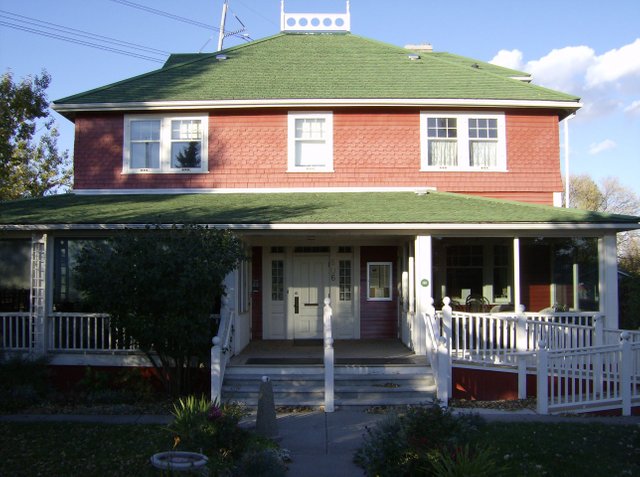
The Deane House Restaurant is open Monday through Friday,
11 a.m. to 3 p.m., and Saturday and Sunday, 10 a.m. to 3 p.m.
Additionally, the building is available for private functions, “murder
mystery” dinners, and is also used by some programs offered by
the Fort Calgary Preservation Society.
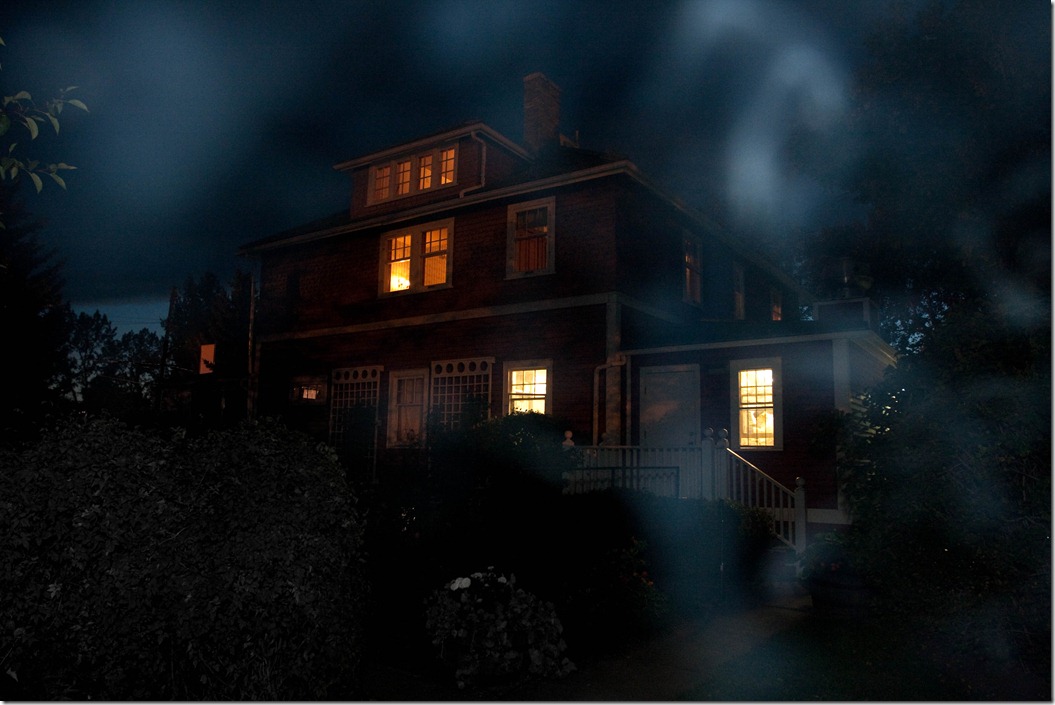
The Deane House is a house that got around—literally. The entire
building would be moved twice and gather some gruesome history
along its short but colorful journeys. Murders, suicides, and even a
few natural deaths would lead to a slew of future ghost activities for
this early cornerstone of Calgary.
In 1933, a 14-year-old boy and his father were tenants in the Deane
House. The boy was epileptic and was scorned by other children for
his occasional seizures. The dismayed boy committed suicide in the
attic of the house. Ten years later, in 1943, the building changed
ownership from C.L. Jacques to Alex Brotherton, who continued
operating the home as a boarding house and often sat in the parlor
and whiled away the time, smoking his pipe.
A murder/suicide took place in the Deane House, in 1952, when a
husband stabbed his wife to death and then took his own life, as their
two children watched in horror. Brotherton’s daughter, Alfena
Cunningham, who lived with Brotherton, died in the house of natural
causes in 1965. Three years later, Brotherton passed on, also of natural
causes.
Deaths in the Deane House occurred from 1933 and ended in
1968 with the death of Alex Brotherton. There are other unconfirmed
reports of murder at the Deane House, including one man who was
allegedly shot on the front porch and another killed inside the house.
After Brotherton’s death, the house fell into disrepair until the city
stepped in.
In 1973, the city of Calgary bought the Deane House as a restoration
project for their upcoming centennial celebration in 1975. In
1975, the newly restored building would be an artist’s studio and
then a teahouse until the early 1980s, when it was transformed into a
preserved historic site and restaurant. It was in the 1960s and 70s
that the haunted reputation began to grow.
Staff members have been experiencing strange sightings and events
in the restaurant for many years. Bob Pearson remembered one experience
a former manager of the restaurant relayed. He said, “The
former manager, Robert, was sitting there one night and thinking about
going home and then figured, ‘No, I’ll stay and do the books,’ when he
claimed that his backpack had sort of levitated off of a shelf and come
down at his feet. He said when that happened, he decided then that he
would go home.”
Another staff member who worked in the building, when it was a
teahouse in the late 1970s, claimed to have seen a man in a black
cloak, who was very solid, walk down the stairs, but the man seemed
to vanish below the knees. The dark gentleman walked down the stairs,
past the shocked waiter, and out the front door and disappeared.
# 3 - THE CATACOMBS MUSEUM

The Catacomb Museum is open daily except for Mondays and
bank holidays. Call for hours of operation. Tours are self-guided,
though museum staff is available to answer questions. Located in Paris, France.
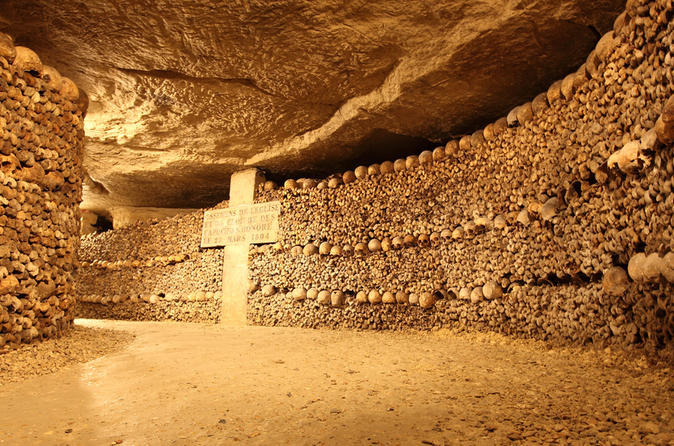
There are human bones stacked in the tunnels under the city—a lot
of them. But I wasn’t prepared for just how many there would be. I was
ready to hear more accounts of the moving shadows and ghostly voices
that have been reported throughout the centuries in those bowels of
Paris, but I wasn’t ready for how the experience would make me feel.
The Catacombs of Paris are a network of tunnels and caves that
run for more than 300 kilometers under the city. To build a city, you
need materials. The Romans were the first to quarry the limestone in
the area in 60 B.C.E.; however, those quarries were the open-air kind—
the Romans just dug out the rock that was exposed. As the city grew
and covered the landscape, tunneling would be required to get more
building materials. In 1180 C.E., Philippe-Auguste became King. He was
a major proponent of tunneling to quarry in order to build ramparts
to protect the city, and it was under his rule that this tunnel network
was truly born.
Disturbing the dead is a bit of a universal taboo. It’s understood
across many cultures that one should leave the dead alone, and many
go through great care to perform rituals and ceremonies to see off
their departed loved ones to the afterlife. However, the living will usually
take precedence over the bodies of their kin who have passed on.
In different sections, the skulls form patterns within the stacks of
arm and leg bones. There are skull crosses, hearts, arcs, and other
groupings. The stacking of bones is intricate, symmetrical, and very
macabre. Try to imagine how the people who had to stack these bones
must have felt. Dumping millions of human remains down a 20-meter
hole is not very respectful of the dead. Perhaps the meticulous care in
the arrangement of the remains was the workers’ way of trying to give
some dignity and beauty to the deceased.
All along the 1.7 kilometers of tunnels, there are off-shoots that
are barred so visitors can’t get lost—1.7 kilometers is only a tiny fraction
of the overall network. Taara said, “In the nonofficial Catacombs,
the bones are not placed as you’ve seen them. They are not wellordered.
They are just accumulated in a little gallery. So you have to
crawl on them. It’s a very strange sensation, but after a while, it’s not
really different than crawling on rocks.” Taara has been a “cataphile”
for 17 years. In her younger days, she went into the tunnels several
times a week. Now with her job and family, she still gets down below
once a month.
The lights are very dim in the tunnels, and as your body blocks the
sparse lighting, shadows dance around the bones. Water drips and
echoes in the distance, and sounds carry as they bounce around the
limestone walls. The skulls certainly add to the very supernatural mood.
Near the end of your Catacomb tour, it’s worth reminding yourself
that these people all had names. Every one of them was a person.
Those 6 million people sacrificed their eternal resting ground so the
city of Paris could grow and thrive. Noblemen’s bones are intertwined
with peasants, families’ skeletal remains may be crushed with their
ancestors’ bones, and visitors walk through all of it. There are 30
generations speaking to each passerby, forced into a single collective
voice. If you listen closely, you may just hear some of those voices.
#4 - Empress Theatre

The Empress Theatre regularly shows the latest Hollywood blockbusters,
as well as film festivals and live theatres. Contact the
theatre for show times and performance schedules.
![2142e807-0255-46ba-ad86-7f6e16667c70.jpg]
(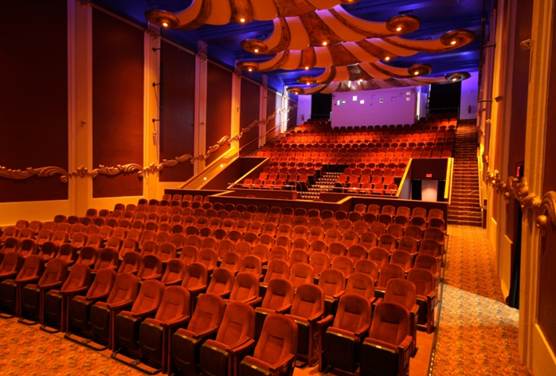 )
)
In his late 16th-century play, As You Like It, William Shakespeare
wrote, “All the world’s a stage, And all the men and women merely
players; They have their exits and their entrances....” As we know from
the many ghostly accounts at the Empress Theatre in Fort Macleod,
sometimes people do come back after their mortal exit. Many outsiders
refer to the source of the Empress Theatre haunting as the “Phantom
of the Empress,” but to the employees, actors, and volunteers, their
Theatre’s spirit is simply called “Ed”—their biggest fan.
The Empress Theatre was originally a franchise of the Famous
Players theatre chain. J.S. Lambert began construction on his franchise
in 1910 on the now historic Main Street during Fort Macleod’s
boom period. The theater has been home to vaudeville, concerts,
lectures, live theater, and moving pictures. A January 1910 Lethbridge
Herald reported that the new building would be a “first class theatre
with every modern accessory.” Construction was completed in 1912,
and the theater opened to the public.
In 1937, Daniel Boyle bought the Empress and performed some
significant renovations. He moved the projection booth above the new
100-seat balcony he installed. He also enclosed the vestibule, added
washrooms and the cornerstone of any movie theater, a concession
stand. In addition to the new construction, Boyle made decorative
enhancements such as updated light fixtures, window covers, and lightup
neon tulips on the pressed tin ceiling in honor of his wife.
Though there is no record of any deaths at the Empress, the ghostly
accounts go back even before 1988, but post-renovations, the activity
increased significantly. From 1986 until 1990, Jay Russell worked for
the Great West Theatre Company—a group that operated out of the
Empress Theatre. He told me about his encounter—one of the first
ghost reports from the Empress. “My theory is that once they started
renovating, that’s when weird things started to happen,” Russell said.
“The building, of course, is on a cement foundation, but there was
kind of a crawl space and gravel bed underneath where the seats were.
They started digging out all kinds of really neat old things, like an old
movie poster of Tex Ritter, and all this really neat stuff. I think when
they started renovating they disturbed something.”
Russell’s encounter occurred in June of 1988. At the time, he was
a university student and trying to work in theater in his summers.
Because of a clerical error, he hadn’t received a paycheck in months,
so he was living as financially lean as possible. When his theater troupe
decided on a group lunch, Russell stayed behind and therefore was
the only person in the building. “I didn’t go, because I was really
poor, and I had a lunch. I decided I wasn’t going to spend any money;
I was going to stay. Besides, it would give me a chance to look around
the Theatre. I go down the old wooden stairs—they were really creaky;
you could hear someone come down them anytime.
“In the basement, there was a bunch of changing rooms, but they
were really tiny. We would use the changing rooms, but there was a
bigger area; I think we called it the Boiler Room. It was big enough
for us to sit around and wait for our cue. And next to that was what we
called the Swamp Cooler Room.
“In the Swamp Cooler Room, there’s no light bulb and no switch.
The room has a big steel door, and there’s no handle on the inside of
the door. I propped the door open because I knew there was stuff in
there. With the door open, I could see this old organ. It didn’t look
like it was complete—it looked like it was all broken up. So I started
walking toward the organ. I reached into the dark, and it’s getting
darker and darker, and I have my hand extended out trying to reach
this old keyboard or whatever it is. And just as I touch it, there’s
this big laugh behind me. Like someone is pulling the funniest joke
in the world on me. It [the laugh] wasn’t spooky; it was just this big
belly laugh. And all of a sudden, the prop on my door was gone and
the door slams shut. And then thump, thump, thump, thump up the
stairs. Someone was laughing and running up the stairs. I was so
mad. Theater guys are full of pranks and jokes, and after a minute or
so they weren’t coming back.”
I asked Russell if he recognized the voice. He said, “I didn’t recognize
the laugh. And I would have heard somebody coming down the
stairs, and I didn’t hear anybody come down, I just heard them go up.”
Russell sat in a completely dark and silent room for an hour and a
half until the crew returned from lunch. They heard his shouts for
help and let him out. Russell said. “They all vouched that they were
all together, and no one left lunch.”
Diana Segboer was born and raised in Fort Macleod, as were
her parents. Segboer was on the management board of the Empress
Theatre in various roles, from executive member to General Manager
of the theater. “I had always heard about the ghosts even as a kid,”
Segboer said. “When we would go to the theater as kids, you would
hear how there was supposedly things happening, but I didn’t experience
anything until I started becoming more involved in the operation
of the theater.”
Another common occurrence is that patrons come in and buy
their tickets from an elderly gentleman at the ticket booth, and then
they find out later that only a woman was working at the ticket booth
that night. For decades now, someone has been watching over the
performances, the building, and the people inside. No one feels threatened
by this presence, and he’s become one of the actors’ favorite
fans. To “Ed,” all the Empress Theatre is his stage.
#5 - THE WHALEY HOUSE
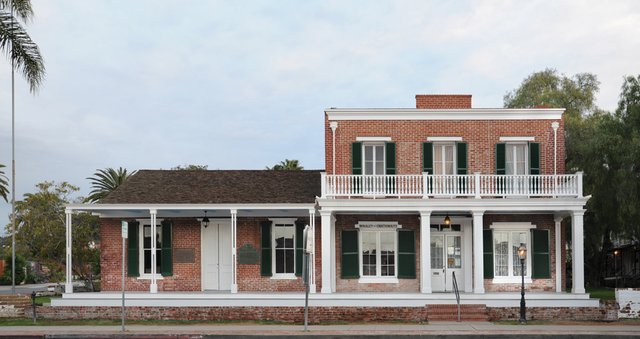
The Whaley House Museum is open 10 a.m. to 4:30 p.m. every day
except Tuesday. After hours, Ghost Tours are available through
Ghosts & Gravestones. Contact the museum for more details.
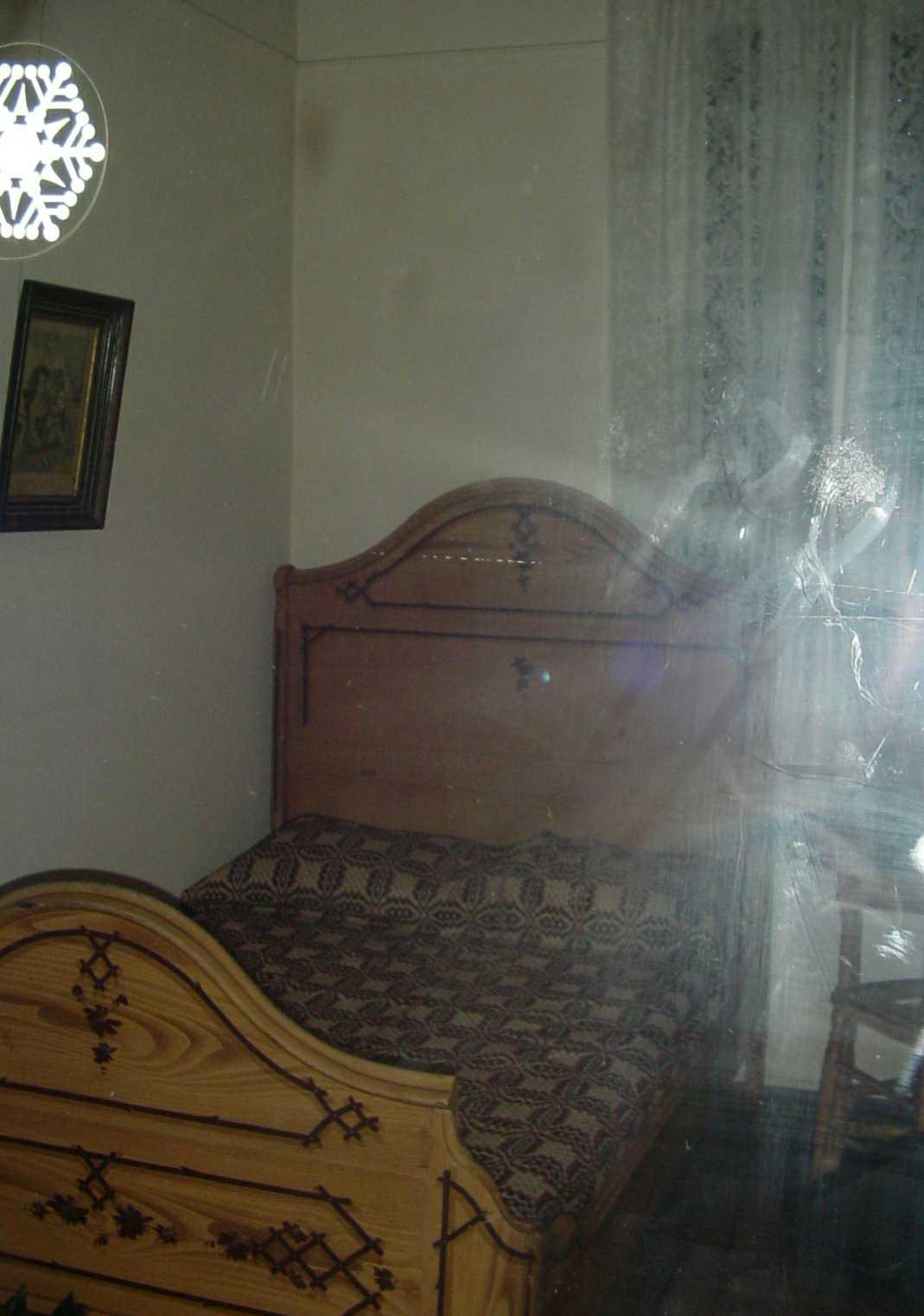
Imagine getting a good deal on a plot of land in an area that you
know is going to grow and prosper. On your land, you build your dream
house—but not just a house. In addition to living quarters for your
family, this will also serve as your business, with a general store and a
giant granary for holding up to 200 tons of grain. Now imagine moving
in and finding out it may be haunted. This is Thomas Whaley’s story.
Whaley was born into a prominent family, in New York City, on
October 5, 1823. His father died when Thomas was only 9 years old,
but money was designated for the young boy to get a good education
and a jump start in business.
Thomas was ambitious, hardworking, meticulous, and certainly a
risk-taker, but luck wasn’t on his side in his business ventures. In
1849, a 25-year-old Thomas Whaley left for California, its gold rush,
and the prosperity that would surely follow. When Whaley traveled
west, he established business contacts and learned about life in
California’s gold rush. He educated himself about local politics, social
circles, and legal matters.
In August of 1852, a man named “Yankee Jim” Robinson and two
accomplices were convicted of trying to steal a pilot boat in the harbor
called the Plutus. Yankee Jim had a reputation of being a ne’er-do-well,
and though the two accomplices were sentenced to only a year in prison,
Yankee Jim was sentenced to hang by a reportedly intoxicated judge
and a jury that included the two owners of the Plutus. On September
18, Yankee Jim Robinson, a towering 6-foot 4-inch tall man, was
brought to the crude set of gallows in Old Town San Diego, and the
hangman’s rope was placed around his neck. He was sure this was
some stunt to try and scare him, and he continued to make sarcastic
comments, even with a rope around his neck. The rope, however, was
last used on a much shorter man, and no adjustment was made for the
extremely tall Robinson. When the gallows door opened, Robinson’s
neck didn’t snap because the rope was too long. He struggled and
slowly strangled to death. The event would quite literally haunt Thomas
Whaley, who witnessed the hanging.
In August of 1853, Thomas Whaley went home to New York and
married Anna Eloise DeLaunay. The couple returned to San Diego,
to grow Whaley’s businesses and to start a family. In September of
1855, Whaley found a great deal on some land in Old Town—the very
lot where Yankee Jim and many others had met their end at the gallows.
Whaley began building his dream home and storefront in Old Town
in September of 1856. The $10,000, two-story, Greek-revival brick
mansion—designed and built by Whaley—was the finest structure built
in Southern California at the time. The property featured a large, ratproof
brick granary, and the downstairs of the house had plenty of room
for Whaley’s general store. Inside, the upstairs living quarters featured
mahogany and rosewood furniture, Brussels carpets, and damask drapes.
But the house had an occupant Whaley hadn’t counted on.
The Whaleys had five children and several stores in California over
the next 10 years. However, 1858 would be a tough year for the Whaleys.
In January, their second-born, Thomas Jr., died at the young age of 18
months. Later that year, an arsonist’s flame torched one of Whaley’s
other businesses located in the Plaza section of Old Town. His grand
mansion would be all he had left, but his store there was not doing well.
I spoke with Robin Sweeton, the head docent for the Whaley House
since 2002, about some of the early legends the Whaleys experienced
shortly after moving in. She said, “He [Whaley] started hearing noises
in the house—footsteps upstairs that sounded to him like heavy boot
steps. He made comments that he thought Yankee Jim might be haunting
his house. That’s the legend…. I’ve heard that it’s in his journals.”
Whaley rented out part of his house to serve as the county courtroom,
and he also rented three rooms upstairs for storage. This brought
in $65 per month, which was good income. After citizens of San Diego
protested that a more central location would be better suited for the
courtroom, the county pulled out of the Whaley House—a deal that
soured Whaley, as he felt the county had reneged on their arrangement.
The Whaley family became destitute, and Thomas Whaley became a
bitter, abusive father and husband.
The next family tragedy to befall the Whaleys happened to their
emotionally unstable daughter, Violet Eloise. After a marriage that
lasted only two weeks, Violet became suicidal. She had a history of
depression, and the failed marriage didn’t help her mental state. On
August 19, 1885, Violet took her father’s pistol to the outside privy
and shot herself through the heart. Thomas Whaley carried his daughter
into the lounge where she died. The note Violet left read, “Mad from
life’s history, Swift to death’s mystery; Glad to be hurled, Anywhere,
anywhere, out of this world.”
Thomas Whaley died December 14, 1890, but his widow would
live on until February 24, 1913. The Whaley House stayed in the Whaley
family until 1953, when Thomas and Anna’s daughter, Corinne Lillian
died in San Diego and the county assumed ownership of the now dilapidated
home.
In 1960, the Whaley House opened as a museum, and the ghost
stories got around pretty quickly. I spoke to Dr. Hans Holzer, one of
the most notable paranormal investigators in the last century. Holzer
has written more than 130 books on the subject and was one of the
first to investigate the Whaley House.
Holzer first visited the Whaley House with acclaimed psychic
medium Sybil Leek and local television personality and his long-time
friend, Regis Philbin. The three encountered the apparition of Anna
Whaley. Holzer and Leek were intent on trying to communicate, but
this was the first ghost Philbin had ever seen, and he was understandably
jumpy. Holzer said, “The older woman, she appeared—it was a
very white figure, and Regis got excited and turned on the flashlight,
and of course that was the end of the phenomenon. And I keep reminding
him of that.”
Today, the Save Our Heritage Organisation runs the Whaley House
Museum. The docents and volunteers dress in period clothing and are
well-versed in the history of the home. They also know the ghost stories,
though you’ll have to specifically ask to hear them.
Thomas Whaley wouldn’t be the last one to hear the lumbering
ghostly bootsteps in the house. Sweeton has also heard the strange noises.
She said, “I heard the heavy footsteps upstairs when nobody was there
but me. It sounded just like there was somebody else in the house. I
heard moving around in a closet and everything, but there was nobody
there.” Because Whaley was the first to hear them, the heavy footsteps
have always been attributed to Yankee Jim.
Sweeton has also smelled perfume and tobacco in the house, when
it is quiet and the visitors have all gone for the day. She says, “I pay no
attention to anything that might go on, because I attribute it to other
people in the house. It’s when the house is quiet and there’s no air
flowing, there’s no doors opening and closing, and there’s nobody
else there when I actually pay attention.”
The ghosts haunting the Whaley House are that of Yankee Jim
Robinson, Mr. Whaley, his wife Anna, the daughter Violet who committed
suicide, and some of the other children who died in the house,
including George and Francis, as well as the Whaley’s 3-year-old greatgranddaughter,
visiting from Oceanside, who ingested some ant poison
at the home.
Sweeton said, “I think Mr. Whaley just kind of went downhill
emotionally. When he died, maybe his daughter was here and he
thought, ‘Well, I’ve got to stay here with her and protect her. Or
maybe he thought he could fix other problems that he had, that he
hadn’t been able to resolve during his life, and that might be why he’s
here. [As for] Mrs. Whaley, I think we keep seeing her running around
because she died and they were all there, and she felt like she had to
stay too. Like she’s there out of the maternal need to remain. If they
won’t leave, then she feels maybe she has to stay with them.”
The ghosts at the Whaley House have been experienced by almost
all of the human senses. Witnesses have felt tickled and brushed up
against, when there was no one there; apparitions have been seen;
perfume and tobacco smelled; and footsteps heard. There’s even
ghostly music. Sweeton heard a piano after she had closed and locked
up for the night. She said, “I had forgotten something and had come
right back in. It took me a minute to realize, ‘Wait a second, why am
I hearing this?’ But it was very sweet and happy and a little melodic.
As soon as I got my whole self in the door, it just stopped. As if they
said, ‘Oh, be quiet. She’s back.’”
Sweeton’s most profound encounter happened one evening, as
she was preparing for a ghost tour. She said, “In the master bedroom
one evening, at 7:15 p.m., right as a ghost tour was expected at the
house, I was upstairs changing my clothes and just getting ready to
come downstairs, and I noticed the master bedroom was white inside.
I couldn’t see in there. I looked in and it was foggy—the whole room
was completely foggy. I just stood there kind of transfixed and thought,
‘Wow, something’s happening. My gosh, I never thought I would see
this,’ and then I realized I smelled a real heavy, sweet pipe smoke.
Then, of course, the doorbell rang and that ruined that experience,
and I had to go let people in. By the time I was able to get back up to
see it, it was gone and it had dissipated. If it had morphed into a form
of any type, I did not get to see that. I may not ever get to see that
again in my life. I don’t expect to, and I wasn’t expecting to when it
happened.”
Some psychically sensitive guests who have visited the Whaley
House have come up to Sweeton after one of her tours and told her
that she was not alone in the courtroom and that there was a man
standing next to her. When Sweeton asked what he wanted, the psychics
seemed to believe he wanted to make sure she got the story right.
Some psychics have also said that he doesn’t seem to like Sweeton
very much. Sweeton said, “As time has gone by and I found out more
about this man, not to say he’s not a nice person, but the less I like
him. I guess if he doesn’t like me, it’s because I’m not bragging about
him and calling him Mr. Wonderful. Apparently he doesn’t like that,
but I don’t care because he has no control.”
Sightings of the Whaley House ghosts are reported a few times
per year, while hearing things, smelling strange perfumes or tobacco,
and other less profound phenomena occur a lot more regularly.
Dr. Holzer’s theory of why the Whaley House is so haunted is that
the people are still strongly tied to the place. He said, “For them,
it’s still yesterday. There’s no sense of time on the other side.” For
whatever reasons Yankee Jim, Thomas Whaley, and his family have
for haunting this historic building, they make their presence known in
the Whaley House with regularity. The staff at the Whaley House
believe the Whaleys may be a bit put-off by the fact that so many
people come through their home each day. If you stop in for a visit, be
sure to wipe your feet and take off your hat before entering—you’re a
guest of the Whaley’s here. And if they don’t like you, they may find a
way to show it.
#6 - THE WHITE HOUSE

Tours of the State Floor of the White House are available, though
you should check the White House Website or call for details on
arranging a tour in advance.
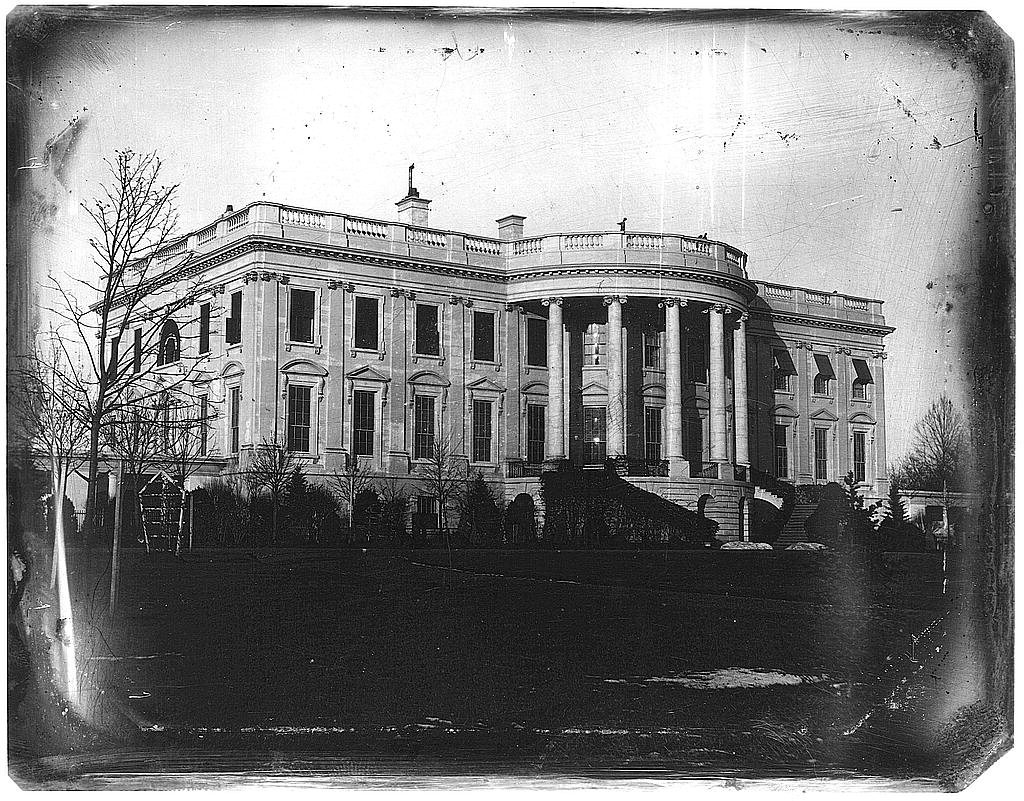
In school, I learned how the different branches of government
operate, and the teachers covered some history of the early construction
projects in Washington, but they didn’t tell us about the ghosts.
Without a doubt, 1600 Pennsylvania Avenue is one of the most famous
addresses in the United States. The White House is home to some
real American spirits—a former president and first lady—and even a
British soldier still lost and confused from the War of 1812.
The perils of running a nation at war with itself and, at times,
other countries and struggling with all the internal issues of economy,
health, and education of this relatively young nation have weighed
heavily on the minds and hearts of presidents, members of their
families, and their administrations. Ghost sightings in the White House
are a regular occurrence to this day. Even skeptics (or those officials
who would never admit they believe in ghosts for fear of political
repercussions) feel something strange there. White House Chief Usher
Gary Walters, who has served every president since Richard Nixon,
said in a Halloween 2003 online chat, “The presidents who I have
worked for have all indicated a feeling of the previous occupants of
the White House and have all talked about drawing strength from the
fact that the previous presidents have lived here.”
During the Constitutional Convention of 1787, the nation’s forefathers
decided it was important to build a strong central government.
General George Washington was to oversee the designing and building
of the young nation’s capital that would be, per Article I, Section 8 of
the Constitution, “not exceeding ten miles square,” on the Potomac
River. At the center of the new city would be the president’s home.
A national competition was held to select a design for this important
building, and James Hoban’s design for a Georgian-style
mansion prevailed. In 1792, construction began of “the people’s
house.” The workers were comprised mostly of slaves, on loan from
local plantations, and skilled immigrant workers.
The stone walls were built 4 feet thick, with ornate adornments
around the windows and on its whitewashed stone façade. The original
building contained 64 rooms on three levels but had no indoor plumbing
and only fireplaces for heat. President Washington died in 1799 and
never lived to see the completion of the great house. President John
Adams and his wife Abigail would be the first to spend the night in the
newly constructed home for the president on November 1, 1800.
Less than 14 years later, the new building was almost lost forever.
In August of 1814, the British invaded Washington, D.C., during the
War of 1812. At the time, President James Madison was in office
and was expecting 40 guests for a dinner that his wife, Dolley, had
spent most of the day preparing. When it became evident that the
city was on the verge of being sacked, the president and first lady
narrowly escaped with their lives, the Gilbert Stuart portrait of
George Washington, and a precious few other belongings before
British soldiers stormed the White House, ate the food Dolley Madison
had prepared, and then set fire to the president’s home. Though the
exact British death toll on the D.C. raid is uncertain, there have been
reports over the years of a ghost of a lost British soldier carrying a
torch.
After the fire, all that remained were the four stone walls of the
house. Everything inside was reduced to ashes. There was talk of
moving the nation’s capital inland, to avoid future military risk, but
President Madison insisted on rebuilding. The house was indeed rebuilt,
cleaned, and brought back better than before. The outside walls
were whitewashed with paint again, save for two spots. Near the North
Portico and on what was to eventually be called the Truman Balcony,
there are still sections that show the burn marks of 1814. They serve
as a reminder of what happened almost two centuries ago.

Arguably the most troubled presidency in the history of the
president’s mansion was Abraham Lincoln’s. Inaugurated on March
4, 1861, America’s 16th president faced a nation torn in two by the
Civil War. Lincoln made the decision to reunite the Union, by force
if necessary—and the force necessary to accomplish this great task
was about as much as Lincoln’s spirit could bear. Brother against
brother, parent against child, tens of thousands of citizens would
lose their lives to the Civil War, which began at Fort Sumter on
April 12, 1861.
Lincoln felt personally responsible for the deaths of so many, and
one of his few areas of reprieve from the burden of leading a nation at
war with itself was his family. When Lincoln’s son, William Wallace
Lincoln, died of a typhoid-like disease in the White House on February
20, 1862, Lincoln’s heart broke. Young Willy was the favorite son of
Abraham and Mary Todd Lincoln. A handsome, intelligent, maturefor-
his-age, and quick-witted child, all who encountered him in the
White House remembered the striking lad. William’s ghost was the
first reported supernatural encounter in the White House.
As quoted in an online article, “William Wallace Lincoln (1850-1862),”
by The Lincoln Institute, Katherine Helm recounts Mary Todd Lincoln’s
experience as communicated to her half-sister, Emilie Todd Helm:
“He comes to me every night, and stands at the foot of my bed
with the same sweet, adorable smile he has always had; he
does not always come alone; little Eddie [Lincoln’s second
son, who died at age 3] is sometimes with him and twice he has
come with our brother Alec, he tells me he loves his Uncle
Alec and is with him most of the time. You cannot dream of
the comfort this gives me. When I thought of my little son in
immensity, alone, without his mother to direct him, no one to
hold his little hand in loving guidance, it nearly broke my heart.”
Abraham Lincoln was elected to a second term but would never
live to see it through. John Wilkes Booth’s bullet found its mark on
Lincoln at the Ford Theatre on April 15, 1865. Lincoln would be the
second president to lie in state in the White House’s East Room. There
would be five more presidents to receive the same funeral honors
before the end of the 20th century.
Mary Todd may not have been the last to feel the presence of her son
in the White House. In his memoir, Taft and Roosevelt: The Intimate
Letters of Archie Butt, Military Aide, Archibald Butt, in a letter to Clara
Butt dated July 26, 1911, said:
“It seems that the White House is haunted. This was a most
interesting piece of news to me, for it seemed to me to be the
only thing wanting to make the White House the most interesting
spot in the United States. The ghost, it seems, is a
young boy from its description.… The housekeeper, a spooky
little person herself, informs me that he has been felt more
often than he has been seen, but when I remonstrated with
her that ghosts have not the sense of touch, at least those
self-respecting ghosts of which I have heard, she insisted that
it was this manifestation of the Thing which caused such fright
among the servants.”
During the first half of the 1900s, the White House was starting to
be noticeably insufficient quarters for the president’s home, office,
and increasingly, his world stage. In 1901, Theodore Roosevelt would
add on the West Wing to house the new Oval Office and free up room
in the main mansion. Rooms such as Lincoln’s presidential office were
converted to bedrooms and other living quarters.
In 1920, a new floor, built of modern concrete and steel, was
added to the top of the building to provide more space for living
quarters. Unfortunately, though the new space was sturdy, it was
also too heavy for the old wooden construction underneath it. Several
different presidents, staff, and guests heard noises, sometimes described
as footsteps in the White House. Skeptics attributed the sounds to
the old house creaking. But while sounds are one thing, physical manifestations
are another.
During Woodrow Wilson’s presidency (1913–1921), First Lady
Ellen Louise Axson ordered Dolley Madison’s beloved rose garden to
be removed. According to White House folklore, when the garden
staff walked up to the rose garden with spades and picks in hand, they
encountered the angry specter of Dolley Madison. The rose garden
still stands to this day and has served as the backdrop for many Presidential
press conferences.
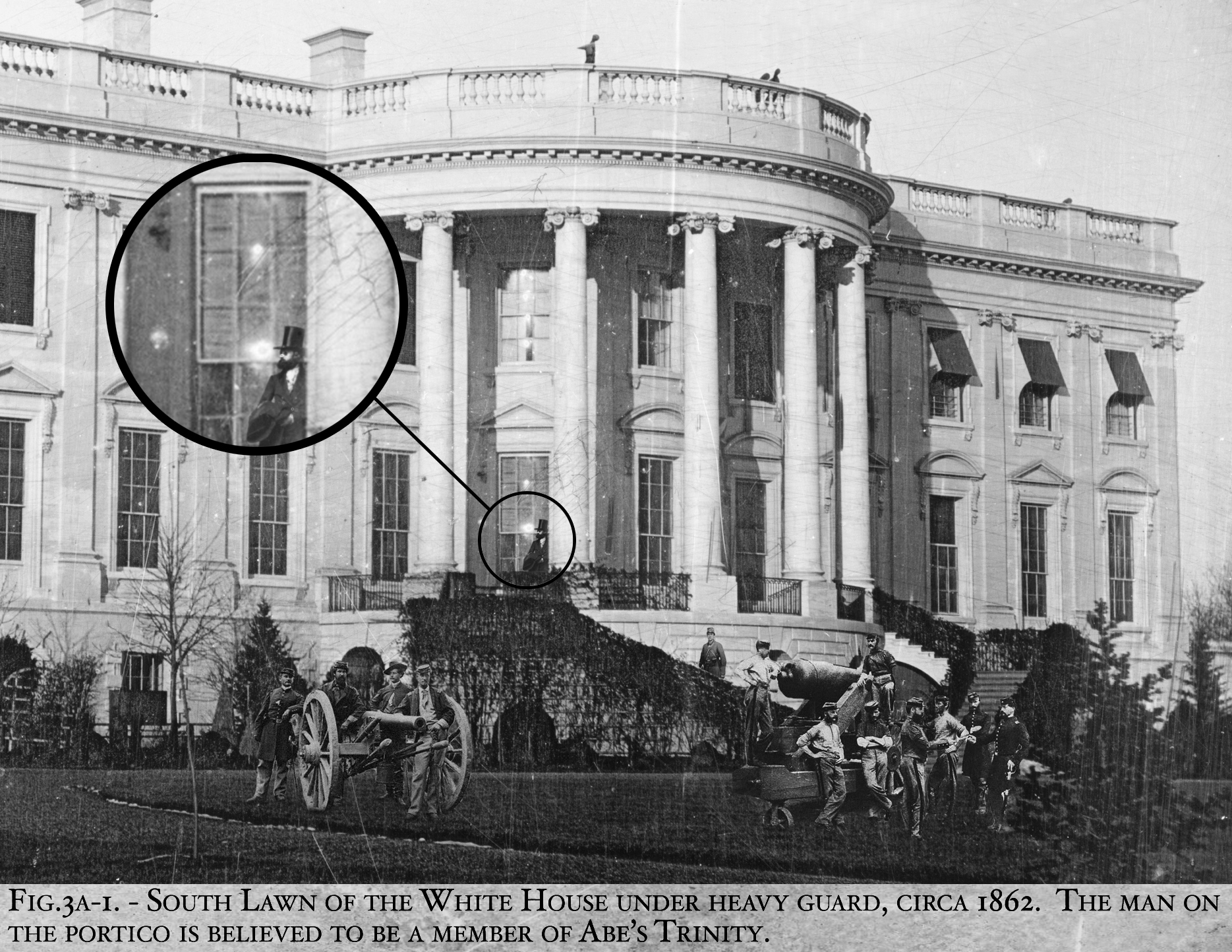
In 1941, Queen Wilhelmina of the Netherlands paid a visit to the
White House and stayed as a guest of President Franklin Roosevelt
and First Lady Eleanor Roosevelt. While sleeping in the Lincoln
Bedroom, the Queen reportedly heard knocking at her door. When
she opened the door, she encountered the ghost of Abraham Lincoln
staring back at her from the hallway.
In 1948, President Harry Truman began a four-year restoration
project. The White House was completely gutted, and the interior
stone walls were replaced with steel beam construction. Modern air
conditioning, electrical conduits, and plumbing were also added, and
two additional floors were built underground. The mansion grew to
132 rooms, with the main house being used for entertaining, formal
meetings, and living quarters, and offices being located in the wings of
the White House.
The updates did not scare the ghosts away by any means. More
reports of sightings and other strange occurrences continue even to
this day. Tony Savoy, White House operations foreman, discussed his
encounter with the ghost of President Lincoln in an interview on the
official White House Website: “It was early one morning, and I was
taking care of the plants up on the second floor.... When I turned the
light on one morning, he was sitting there outside his office with his
hands over top of each other, legs crossed, and was looking straight
ahead. He had a gray, charcoal [colored] pin-striped suit on, and he
had a pair of three-button spats turned over on the side with black
shoes on. He was sitting there, and he startled me and I stopped. And
when I blinked, he was gone. And I left there and went down the stairs
and told assistant usher Nelson Pierce what I had seen. And he said
I’m just one of the other ones that had seen him throughout the house
over the past years.”
Dennis Freemyer, White House assistant usher, said of his encounter,
“I’ve been here almost 25 years. I’ve only had one experience
upstairs, and it was back during the Reagan administration. Normally
we have a gentleman that works here in the evenings that turns out all
the lights at the first family’s request and kind of shuts the place down
for the night, and he was out sick that night so I was doing his job.
I’d gone upstairs and turned out lights in a number of rooms. I went
to the Lincoln Bedroom, and there’s a chandelier there that had a
light switch that was a dimmer-type that you just push in and it turns
it off—a rheostat. So I turned that light off, turned out some other
lights, went into a series of other rooms, went across the hallway into
what’s called the Queen’s Bedroom, and as I came out of the Queen’s
Bedroom, I was looking directly into a darkened Lincoln Bedroom,
and all of a sudden the chandelier came back on.
“Of course I’d been aware of some of the stories and all, so I ran
in right away, hoping that I’d get to see something or feel something
and really didn’t see anything at first. I turned off the chandelier, and
then I got a very cold chill. I could definitely feel something, so I kind
of looked around. I looked in the mirror thinking maybe there was
something behind me, which of course there wasn’t. But without a
doubt, I could feel a very cold presence of someone/something there.”
The Lincoln Bedroom has certainly been a hot spot for supernatural
occurrences in the White House. On the History Channel’s
The White House: 200th Anniversary, former First Lady Rosalynn Carter
said of the infamous room, “They were so overwhelmed by being in
that place.... Most of our friends who spent the night in the Lincoln
Bedroom didn’t sleep.”
White House chief usher Gary Walters described his encounter
that occurred near a staircase between the East Room and North
Portico. There are two large doors that are secured to their walls in
an open position. Walters said, “These doors are open 24 hours a
day, never locked, and in the open position without being closed.
There were three of us standing here in the vicinity of these doors,
and we felt a cold rush of air pass through us. It seemed like it came
from the staircase and from these doors. The doors, after we felt the
cold rush of air, came slowly closed—something that none of us had
ever seen before, and we proceeded to the North Portico doors and
looked to see if maybe somebody had opened the doors and created
a vacuum, or possibly if somebody had opened a door downstairs.
We looked in both areas and didn’t find any explanation for why
these doors that are open on a 24-hour-a-day circumstance would
all of a sudden close. That’s one of the mysteries of the White House,
and some people wonder if that may have been Lincoln’s ghost that
went through.”
All around the White House there are reminders of past presidents
and of more than 200 years of American history. From the furniture
to the paintings, each president has made some impression on this
mansion. Decisions about wars, economic struggles, and family turmoil
have wrestled with the hearts and minds of every American president.
Some great triumphs and great tragedies have been seen and felt at
this historic building as the rest of us looked on. There is no doubt
that some of the nation’s forefathers are still concerned and still paying
close attention to the country and building they gave so much of
themselves to.
Thanks for Reading, If you enjoyed this let me know in the comments. I might do another one with More Haunted places.
Pictures obtained from Google Image Search. Information obtained from many various places.
Strange these places offer tours...
So cool. I love paranormal/ghost tours. You get a unique version of the history.
I was born in a haunted house that now has tours going through it!
Check out the Anson Call Home in Bountiful, Utah if you’re interested.
I will for sure check it out
Let me know what you think! :-)
Very cool. I love reading all these haunted tales.
I love anything Paranormal.
есть конечно фото от которых мурашки и хочется пролистнуть как можно быстрее. теперь раскажи нам о самых благоприятных местах в мире!